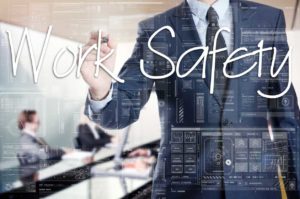
The Occupational Safety and Health Administration (OSHA) represents the federal agency that implements rules and regulations that ensure the health and safety of American workers. Employees who ply their professional skills in the United States enjoy workplaces that are “reasonably free of health and safety hazards.” Tucson, Arizona restaurant owner Brett Bennett quickly learned about the legal rights employees have under OSHA mandated rules and procedures.
“I worked more than 15 years in the restaurant industry in almost every position. I never knew about OSHA law. I saw the signs posted about safety, but only one of my employers ever discussed how to prevent workplace injuries. That’s scary because restaurants are prime locations for employee safety issues.”
Brett makes health and safety a priority in the training of new employees. He also requires his employees to go through certification programs, such as the one offered by Servsafe, which teaches food handling safety.
Overview of OSHA
Passed by Congress and signed into law by President Richard Nixon in 1970, the Occupational Safety and Health Act created OSHA to operate within the United States Department of Labor. The primary intent of the landmark law remains to reduce the number of hazards in the workplace, as well as require employers to implement specific health and safety initiatives that decrease the number of workplace-related injuries.
The rights granted by OSHA include the posting of safety rules, standards, regulations, and requirements that pertain to each industry. For example, Brett must post notices that remind employees to wash their hands after using the restroom. OSHA also mandates that employers have access to employee medical records. Brett had to ensure every one of his team members was free of diseases and illnesses that exposed his customers to health hazards.
Employees Have Rights under OSHA
Employees have the legal right to submit a request for the area OSHA director to perform an evaluation of the workplace to determine if an employer has violated one or more provisions of the OSHA legislation. The 1970 legislation allows an employee representative to accompany an OSHA inspector during a workplace evaluation. Employees enjoy the right of anonymity whenever they file a written complaint to the Occupational Safety and Health Administration. Moreover, employers cannot take retaliatory actions against employees who file complaints for workplace health and/or safety violations.
OSHA Mandates Employer Obligations
OSHA clearly describes the responsibilities employers have for complying with OSHA, although much of the legal language is ambiguous at best. For example, employers must provide a workplace free from recognized hazards.” More specific language that holds employers accountable for worker safety include “inform employees of OSHA safety and health standards that apply to the workplace.” Employers must “display in a prominent location the official OSHA poster that describes the rights and responsibilities” employers have under the ground breaking worker health and safety law.
Why the Whistleblower Provision Matters
The whistleblower provision written into the 1970 OSHA legislation encourages employees to contact the worker health and safety agency to report violations. If OSHA or a state agency that handles worker health and safety issues feels the employee report has merit, the agency will conduct an unannounced on site inspection to determine if the employer has violated one or more OSHA rules. After an on site inspection, the OSHA representative will meet with both the employer and employee representative to discuss any of the hazards discovered during the inspection.
Employers that face OSHA investigations or simply want to learn more about workplace health and safety laws should consult with an attorney who specializes in business law. The legal provisions of the original seminal worker health and safety law continuously undergo revisions to account for rapidly changing technology and new standards that ensure workers enjoy a hazard free environment.

Leave a Reply